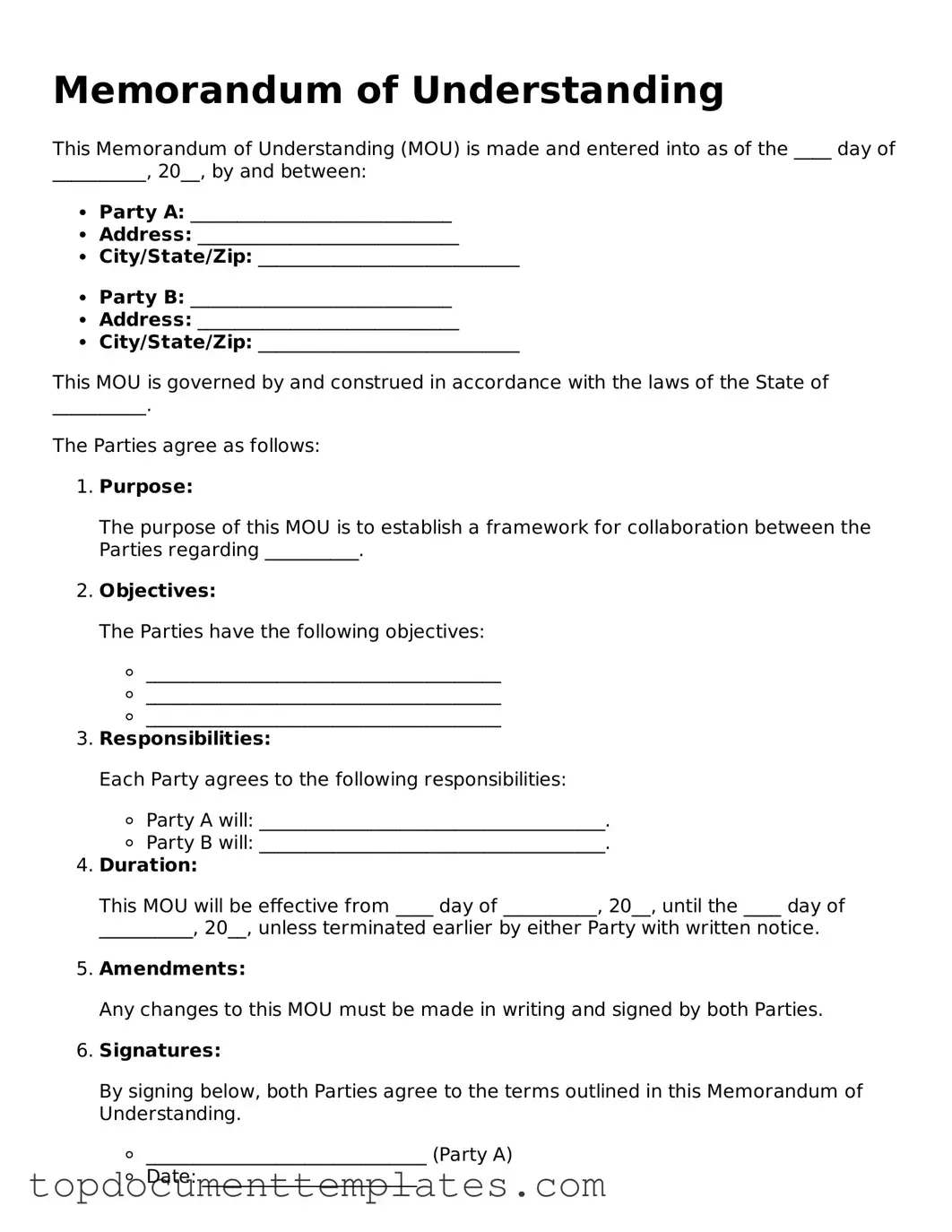A Memorandum of Understanding (MOU) serves as a vital tool for individuals and organizations seeking to establish a mutual agreement on shared goals and responsibilities. This document outlines the intentions of the parties involved, creating a framework for collaboration without the binding constraints of a formal contract. By detailing the roles, expectations, and contributions of each party, an MOU helps to clarify the objectives and the scope of the partnership. It often includes elements such as timelines, resources, and methods for resolving disputes, ensuring that all parties have a clear understanding of their commitments. While an MOU is not legally enforceable in the same way as a contract, it carries significant weight in fostering trust and accountability. This makes it an essential instrument in various contexts, from business partnerships to community projects, where cooperation and clear communication are paramount. Understanding the nuances of an MOU can empower individuals and organizations to navigate their collaborative efforts effectively, paving the way for successful outcomes.
